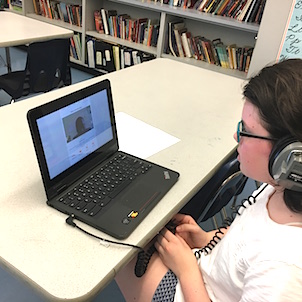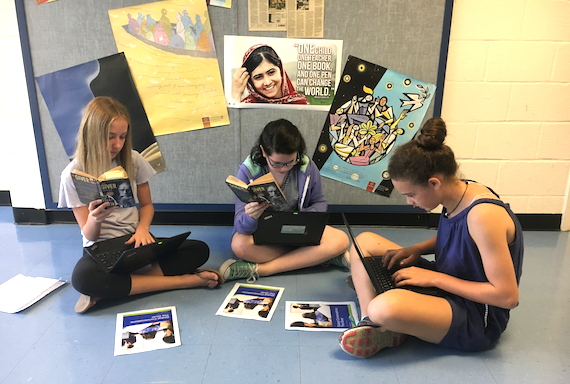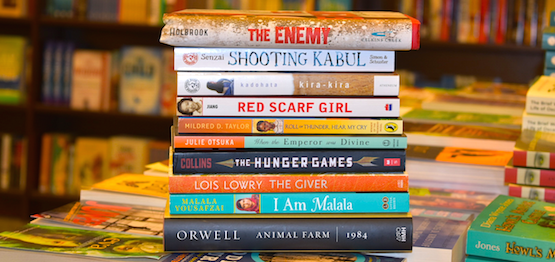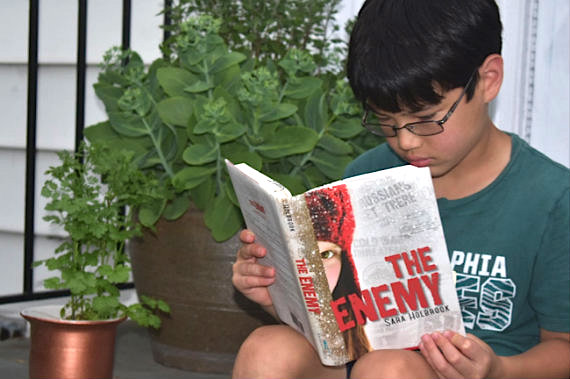Diverse Books Help Kids Discover Social Justice
 By Bridget Suvansri
By Bridget Suvansri
At a time when society is bombarded with fake news, trapped in social media echo chambers, and overwhelmed by mainstream media sensationalism, teachers are challenged to create an environment that positively influences how students take in information about the world and discuss it with each other.
It’s our responsibility as teachers to bring social issues to the middle school classroom in relevant ways. According to Judith Caesar, English professor at the American University of Sharjah (AUS), “Literature is thought provoking; it allows us to raise questions and gives us a deeper understanding of issues and situations.”
In the classroom, literature is a tool we can use to accomplish a variety of goals that go beyond close reading, critical thinking, and analysis. Indeed, when teachers choose literature that widens the lens on life, students also discover how to do these four things:
-
Read Between the Lines
Research shows that when students discover the answers on their own rather than having them handed to them, they are more likely to retain what they are learning. Using diverse literature allows kids to discover “justice” on their own through reading and interpretation.
For example, Pam Munoz Ryan’s Esperanza Rising is a wonderful book for teaching character change and symbolism, but students will also be drawn to the issues of immigration and fair working conditions while reading.
Therefore, if we select books that present strong characters with diverse backgrounds, characters who grow, change, overcome obstacles, and grapple with situations of social justice like Esperanza, we stretch kids out of their comfort zone, help them make sense of the world around them, and inspire them to become more empathetic citizens.
-
Walk in Someone Else’s Shoes
When teachers expand students’ understanding of the world through history, they are one step closer in shaping responsible global citizens. By including strong, multicultural historical fiction in the classroom such as Taylor’s Roll of Thunder, Hear my Cry, Otsuka’s When the Emperor was Divine, or Holbrook’s The Enemy: Detroit 1954, we touch upon social injustice of the past to shed a light on our present issues with race and immigration.
We use classic fiction such as Orwell’s Animal Farm or current fiction such as Collin’s The Hunger Games to discuss how students’ futures can be impacted by the choices they make today and how propaganda can cloud those choices.
I urge students to put themselves in the position of the protagonists in memoirs such as Jiang’s Red Scarf Girl and Yousafzai’s I Am Malala to experience the adversity characters face when there is political turmoil, and limits are placed on personal freedom.
-
Break Down Walls

For the past two years, my students not only read I Am Malala, but also connected with students in Pakistan through Level Up Village to discuss issues that arise in the books like access to education, gender equality, and leadership. Implementing programs like these magnify the social lessons of literature through real-world conversation that extends beyond the confines of the classroom walls.
-
Spring into Action
When we employ books that have a young hero or heroine who experiences adversity, students see resiliency in action and learn to question and rethink what is happening in their community.
I’ve seen them inspired to take action in their own ways by standing up to bullies after reading Yep’s Dragonwings, writing letters to the local paper to improve an aspect of their community, and making efforts to reach out to and include those who are different from themselves after reading Senzai’s Shooting Kabul or Kadohata’s Kira Kira.
I’ve also seen students take action and demonstrate personal growth when video chatting with peers in Kenya or Ghana about issues such as gender stereotypes, global warming, or access to resources stemming from their shared reading of Lowry’s The Giver. Thoughtful literature leaves a lasting impression that people can rise and overcome, that a person is never too young to stand up for what they believe in, and that individuals can speak out for change.
The Best of Both Worlds
I always end a book club unit with two questions: “What resonates with you after having read this novel? What can you take from this and apply to your own lives?” While the answers my students provide are as diverse as the characters in the books, they all share some common threads: promote inclusion, respect everyone, and lift up those around you.
Literature has a way of naturally cultivating empathy and tolerance and helping students recognize, evaluate, and discuss various perspectives. We can choose any texts; let’s choose the ones that build strong readers and strong people who think about the choices they make and the kind of people they want to be.
Photos from Bridget Suvansri’s classroom.
Bridget Suvansri is a Language Arts Teacher and 6th Grade Facilitator at Eastern Middle School in Greenwich, CT, where she was named 2018 District Teacher of the Year. She is also a Level Up Village global educator and has published an article on Edutopia. Connect with her on Twitter at @BridgetSuvansri.





































Some great books mentioned here! Thanks.
You are so very welcome!
So true! Excellent article, and suggestions for meaningful books for ALL of us! Thanks very much :)
I am glad I was able to offer helpful suggestions! May the kids enjoy the books as much as you enjoyed the article!
Thank you for this. Each year Barnes & Noble gives us the opportunity to buy books for kids. I am always looking for something for Young Adults. Reading about the concerns real people face today helps students develop empathy, which is essential for them to co-create a world in which everyone’s needs are met. You do good work!
I am thrilled that my suggestions will help you fill your book shelves this year! And, thank you for recognizing what our young people need too! We are all in this together, and together we can make a difference.
Thank you for this article. More than ever, it is important to explore these themes and traits with our students. Thank you for spreading the word!
You’re welcome, Susannah! Together, we make a difference!